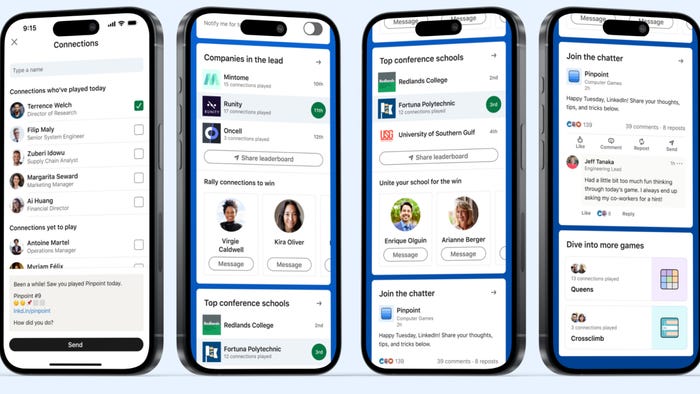How Final Fantasy VI helped me build a better sports simulation game
When you think of sports simulation games, storytelling isn’t what always come to mind. But all of them actually have a great potential for a narrative.

When you think of sports simulation games, storytelling isn’t what always come to mind. But all of them actually have a great potential for a narrative. Every player will start creating a story about their team in their mind. It could simply be a batter who hits a walk-off home run, or a shooting guard who makes a game-winning, buzzer beater three points shot.
These characters don't need to talk with messages or have a procedurally-generated personality to feel real. Their actions on the field talk for themselves. I built my game Astonishing Baseball around that concept: giving the players ways to build their own narrative. There are messages from fans, press articles, and you can also receive in-game emails from your pitcher saying that he loves to play for your team for example. Players then fill the blanks.
One day, I read that amazing article about Final Fantasy VI design. Seriously, if you haven't read it, it's a gem. I never played Final Fantasy VI to be honest, but a lot of stuff in this essay caught my attention.
Note: I spent a lot of time on FFVII, so don't be too harsh on me for not playing FFVI.
The quests of sports
The first thing that struck me was the quests structure. It's actually a classic RPG storytelling. You got linked main quests, divided in acts and sometimes minor, optional missions. What I saw is that every sports simulation game has actually the same kind of structure.
Every season is an act, every game is a quest part of a bigger plot (win the title), and if your game has challenges or live events, here are your secondary missions! Who would have guessed Sports is actually an ongoing story with a classic narrative structure?
Once you realize that, you can apply design principles from RPGs to sports. Especially about the rhythm of the game.
The essay describes how FFVI balances plot, exploration and combat on the basis of the current quest. You generally don't have much room in a sports simulation on that side, at least in most team sports like basketball or soccer.
If each game is a quest, you can consider it mostly like a combat. There's not much you can do about exploration, but you can add a lot about plot! As I mentioned before, I just want to help the player to create his own narrative. No tragic story like in some other games career mode. But a lot happens in the meta-game. You receive messages from your team members about their contract. There are press reports about the hot and cold teams of the moment. There are awards like Players of the week or MVP, and events like the draft or the all-star game.
What you don't want, just like with any RPG or good story, is having the player to feel overwhelmed. Rhythm is key. So I built a tool to visualize every event happening in my game, and a rhythm chart, to ensure a consistent flow of events through the season.
You'll see that as I have intentionally kept a regular number of events through the season. I didn't want to add more as you approach the playoffs. A lot is going on in the game at that time, so there's no need to increase the tension in its meta part in my opinion. But it'd be reasonable to have a linear progression I guess. A lot of events are also used as indicator of metonymic time. The all-star game marks the half of the season, while things like the MVP awards indicate that playoffs are close.
NPC irony
Unconsciously, the game already featured some NPC irony. As the game doesn't feature a tutorial, I rely on the in-game inbox to give some hints to the users. But drawing some inspiration from FFVI, I decided that these messages should not be impersonal, but come from characters with a defined personality. For example, the game has a "ballpark" feature where players can manage their stadium, add shops or change food prices.
Instead of sending a generic message from The Astonishing Baseball team saying there's a ballpark feature, it's now from real NPC picked from a pool of fake companies offering the player to do business to improve the stadium. This principle has been applied to other aspects of the game to give a sense of "living world" to the player.
The vilain
Rivalries are the foundations of some of the best stories in sports history. The Yankees and the Red Sox or the Lakers and the Celtics produce great headlines because of their past. In any classic RPG story, there's always a villain, which was missing from my original design.
And even if some players were creating rivalries in their imagination, it wasn't something really supported by the game. So I added a rival system, which basically starts when any other team beats yours by a large score. You're humiliated, and the other coach send you a taunting message. Here starts the rivalry. Through the seasons, the rival coach will keep sending (mostly taunting) messages, and the team receives some bonus to catch up with the player.
This creates a sense of tension before each encounter, and allows the rival team to be a tough one to beat. On this feature, it's clearly just a beginning, and I'm exploring other ways to build on it. The random choice of the rival team for example can sometimes be disappointing.
Final Sports Fantasy
Borrowing some design principles from RPGs has been more relevant than expected, and so far players seem to like it. Even though ideas presented in this article were mostly drawn from FFVI game design, I also took some inspiration from TRPGs like Dungeons & Dragons. But this will be for another time, I've a rivalry game to play.
References
http://thegamedesignforum.com/features/reverse_design_ff6_1.html
Links
Read more about:
BlogsAbout the Author(s)
You May Also Like








